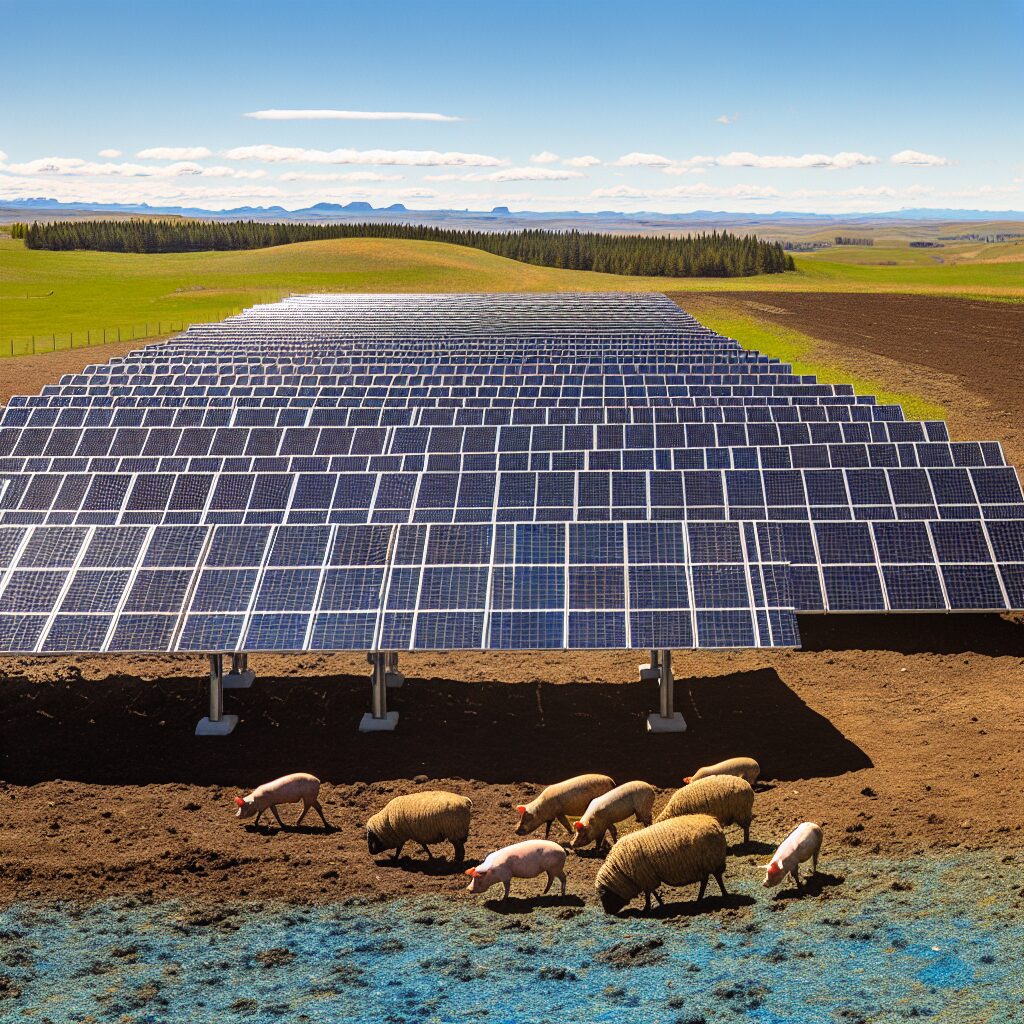Booming Solar Industry Seeks Weed-Chomping Crews for Agrivoltaics
The solar energy sector is witnessing a significant surge, and with it comes an innovative approach to land management and energy production called agrivoltaics. This method, which integrates agricultural activities with solar power generation, is transforming the landscape of renewable energy. One of the fascinating developments in this field is the use of weed-chomping crews—primarily consisting of grazing animals—to maintain the land beneath solar panels.
What is Agrivoltaics?
Agrivoltaics, also known as agro-photovoltaics, is the simultaneous use of land for both agriculture and solar power generation. This concept aims to maximize land efficiency by combining farming and renewable energy production in a harmonious and mutually beneficial way. Not only does it offer a sustainable solution to the growing demand for both food and clean energy, but it also helps to combat land degradation and promote biodiversity.
The Role of Grazing Animals
One of the key challenges in maintaining solar farms is managing the vegetation under and around the solar panels. Traditional methods like mowing or herbicides can be labor-intensive and environmentally damaging. Enter the weed-chomping crews—flocks of sheep, goats, and even pigs, which offer a natural and eco-friendly solution.
These animals graze on the vegetation, keeping it trimmed and under control without the need for mechanical intervention. This method not only reduces maintenance costs but also enhances soil health through natural fertilization and aeration. Moreover, it provides an additional revenue stream for farmers who can lease their livestock to solar farms.
Benefits of Combining Livestock and Solar Panels
1. Sustainability: Grazing animals help reduce the carbon footprint associated with maintaining solar farms. By eliminating the need for fuel-powered machinery and chemical herbicides, this method promotes a more sustainable approach to land management.
2. Cost-Efficiency: Employing grazing animals can significantly cut down on labor and equipment costs. This makes it an economically viable option for maintaining large-scale solar farms.
3. Enhanced Soil Health: The natural grazing process helps improve soil structure and fertility. The animals’ droppings act as organic fertilizer, enriching the soil with essential nutrients.
4. Animal Welfare: Grazing on solar farms provides livestock with a consistent and diverse food source. It also helps farmers by offering a new and stable revenue stream during seasons when traditional grazing lands might be less fruitful.
Challenges and Considerations
While the concept of using grazing animals in solar farms is promising, it does come with its own set of challenges. Ensuring the safety of both animals and solar equipment is paramount. There needs to be adequate fencing and monitoring to prevent animals from damaging the panels or getting injured.
Additionally, not all types of vegetation are suitable for grazing, and not all solar farm designs can accommodate livestock. Careful planning and collaboration between solar farm operators and livestock managers are essential to address these issues effectively.
Case Studies and Success Stories
Several regions around the world are already reaping the benefits of agrivoltaics. For instance, in Alberta, Canada, solar farms have successfully integrated flocks of sheep to manage their vegetation. This initiative has provided a sustainable solution for land management while supporting local farmers.
In Europe, similar projects have been implemented with great success. Countries like Germany and France have embraced agrivoltaics, with numerous solar farms using sheep and other livestock for vegetation control. These projects have demonstrated the economic and environmental advantages of this approach.
The Future of Agrivoltaics
The future of agrivoltaics looks promising as more solar farm operators and farmers recognize its potential. With the global push towards sustainable energy and agricultural practices, agrivoltaics offers a win-win solution. It not only supports renewable energy goals but also promotes sustainable farming practices and enhances biodiversity.
As technology advances and more research is conducted, we can expect to see even more innovative solutions in this field. From smart grazing systems that monitor and manage livestock to advanced solar panel designs that accommodate different types of agriculture, the possibilities are endless.
Conclusion
The integration of grazing animals into solar farms represents a significant step forward in sustainable energy and land management. Agrivoltaics is a powerful example of how innovative thinking can address multiple challenges simultaneously, providing economic, environmental, and social benefits. As the solar industry continues to boom, the use of weed-chomping crews is set to play a crucial role in shaping the future of renewable energy.
Source: https://www.google.com/url?rct=j&sa=t&url=https://www.cbc.ca/news/canada/calgary/bakx-agrivoltaics-alberta-sheep-pigs-1.7287853&ct=ga&cd=CAIyHDBjNjdhMjlmZD

